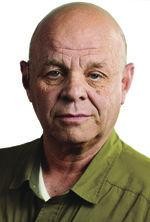In September 2016 the former outdoors editor of the Idaho State Journal wrote an article titled, “The 4 best places to hunt for deer in Southeast Idaho in 2016.” He identified Unit 70 near Pocatello, Unit 73 in the Malad area, Unit 76 in the Diamond Creek area, and Unit 78 in the Bear Lake area. The good news is that those areas remain pretty good for deer hunting. The bad news is they are draw areas, and if you haven’t successfully drawn for one of those areas, you would be foolish to hunt there.
When people ask me where to find deer and elk, I usually tell them that is exactly what I’m trying to learn when I take a couple of days, grab my binoculars, compass, topographic maps, pen and notebook and scout areas that I think I might like to hunt. My scouting trips determine where I decide to hunt, even though I have been hunting for a lot of years and have some areas that I generally prefer. Scouting for game also gives me a chance to formulate a hunting strategy for the area.
Even my old haunts change from year to year in terms of amount of game and how they are moving through the area. Little things that I may not be aware of can make game change what trails they are using, where they bed down and where they forage or drink.
I don’t stop hunting when the season ends, but I don’t hunt illegally. Most of the year I scout possible hunting areas, weather permitting. Normally, when I am scouting I don’t carry a rifle, but I do like to carry a .357 Smith and Wesson revolver or a little bigger as a precaution. However, topographic maps, pen, note book and binoculars are the tools of scouting for game.
I generally start my scouting trips as early as April if possible, but the end of May, or first part of June is more likely. I like to get into the back country as much a possible and just observe what has changed and what is still pretty much the same.
The most important notations I make in my notebook concern signs. The primary signs I look for are droppings, tracks, game trails, feed areas, beds , rubs and scrapes.
The amount of droppings one sees indicates whether deer or elk are using the area and fresh droppings indicate whether the area is currently being used. Extremely large clumps of droppings may indicate that a large deer or elk is using the area.
Tracks can also be telling. If a track is dry and eroded, it was made several day before. If it is fresh and well defined, the track may be very recent or only hours old. Does usually travel in groups, so if one finds a single set of tracks, it may be a mature buck. When walking, a buck should have a little longer stride between tracks. The more you study tracks the better you will become at using them to determine where you want to hunt.
The best game trails usually lead to thick bedding cover and dense escape routes.
Night time game trails normally are open and accessible and the game will not use them during day light hours.
If you find an area where the vegetation is pressed down, you have probably found a bedding area. Don’t spend much time there, but find a spot where you can intercept game as they move into or out of their bedding area.
Rubs are a major sign of game in the area. Several rubs may show you which direction the game is moving. Pick a spot where you can clearly see any rubs and you may get your deer or elk if it returns to the rub. A rub where the tree is ripped to shreds usually indicates a mature buck. Game generally rub the side of the tree from which they approach.
Scrapes are areas on the ground where bucks have been pawing out leaves and urinating to attract does in heat. The best are damp with a tree branch bent down and scent left on the branch.
Mature bucks will usually leave several scrapes along a corridor they actively check. If you find such an area, setting up down wind where you have a good view just may be worth while.
I like to scout for game several times during the summer, but the most important trip is about a week before the season opens. After that I leave the area undisturbed until the season opens.
However, you won’t know where to look for game during hunting season if you haven’t done any scouting before hand. Remember to mark everything you find on your topographic map. then when you return during opening day of hunting season, or the night before, you will be ready with a knowledge of the area and where to find game.
Smokey Merkley was raised in Idaho and has been hunting since he was 10 years old. He can be contacted at mokeydo41245@hotmail.com.



